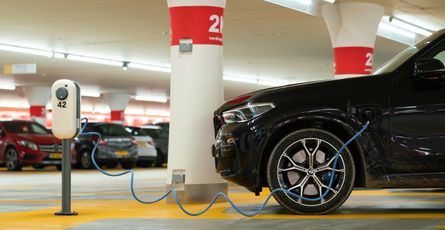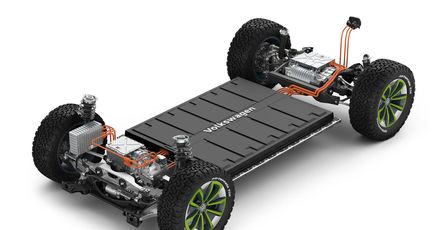
EVSE in Electric Vehicles: Streamlining the Charging Experience
- Ravinder
- Manufacturing , Outsourcing , EV , Automotive
- 25 May, 2023
Electric Vehicle Supply Equipment, commonly known as EVSE, is an essential component of the electric vehicle charging infrastructure. It encompasses various charging stations and equipment designed to provide electric vehicles with the power they need to operate efficiently. This comprehensive guide explores the diverse aspects of EVSE, from its types and benefits to installation, maintenance, and the future of electric vehicle charging.
1. What is EVSE in Electric Vehicles?
EVSE stands for Electric Vehicle Supply Equipment. It refers to the infrastructure and equipment required to charge electric vehicles. EVSE encompasses various charging stations, connectors, and supporting components that enable the safe and efficient charging of electric vehicles.
2. Types of EVSE
2.1 Level 1 Charging Stations
Level 1 charging stations are the most basic form of EVSE. They typically provide a charging power of 120 volts, which is similar to a standard household electrical outlet. Level 1 charging stations are convenient for overnight charging at home but have a relatively slow charging rate.
2.2 Level 2 Charging Stations
Level 2 charging stations offer a faster charging rate compared to Level 1. They provide charging power between 240 to 250 volts, significantly reducing the charging time. Level 2 charging stations are commonly found in public spaces, workplaces, and residential settings.
2.3 DC Fast Charging Stations
DC Fast Charging stations, also known as Level 3 charging stations, provide the fastest charging rate. They utilise direct current (DC) to rapidly charge electric vehicle batteries. DC Fast Charging stations are typically found along highways, enabling long-distance travel and minimizing charging time.
3. Benefits of EVSE in Electric Vehicles
EVSE brings numerous benefits to electric vehicle owners and the environment. Here are some key advantages:
3.1 Convenient and Easy Charging
EVSE provides a convenient and hassle-free charging experience. With a robust charging infrastructure, electric vehicle owners can access charging stations at home, work, and public spaces, eliminating range anxiety and enabling seamless daily commutes.
3.2 Environmental Impact
By promoting the adoption of electric vehicles, EVSE contributes to a significant reduction in greenhouse gas emissions. Electric vehicles powered by renewable energy sources can effectively eliminate tailpipe emissions, leading to cleaner air and a greener future.
3.3 Cost Savings
Switching to electric vehicles and utilizing EVSE can result in long-term cost savings. Electric vehicles have lower fuel and maintenance costs compared to traditional internal combustion engine vehicles. Charging with off-peak electricity rates further enhances the financial benefits.
3.4 Improved Battery Life
EVSE offers charging options that promote optimal battery health. Level 2 charging, for example, provides a balance between fast charging and battery longevity. By following proper charging practices, electric vehicle owners can extend the lifespan of their vehicle’s battery.
4. How Does EVSE Work?
EVSE operates on two primary charging methods: AC (Alternating Current) charging and DC (Direct Current) charging.
4.1 AC Charging
AC charging is the most common method used in EVSE. The charging station converts the AC power from the electrical grid into the DC power required to charge the electric vehicle’s battery. This conversion occurs within the vehicle’s onboard charger.
4.2 DC Charging
DC charging, also known as fast charging, provides a high-powered DC current directly to the electric vehicle’s battery. Unlike AC charging, DC charging bypasses the onboard charger, enabling faster charging times.
5. Installing EVSE at Home
Installing EVSE at home offers the convenience of charging your electric vehicle in the comfort of your own garage or driveway. Here are the key considerations for home installation:
5.1 Evaluating Electrical Capacity
Before installing EVSE, it’s crucial to assess your home’s electrical capacity. An electrician can evaluate your electrical panel and wiring to ensure it can support the charging station’s power requirements.
5.2 Choosing the Right Charging Station
Selecting the appropriate charging station is essential for efficient charging. Factors to consider include charging power, connector compatibility with your vehicle, smart features, and warranty.
5.3 Hiring a Professional Electrician
To ensure a safe and reliable installation, it’s recommended to hire a professional electrician. They have the expertise to handle electrical connections and ensure compliance with local electrical codes and safety standards.
6. Public Charging Infrastructure
Public charging infrastructure plays a vital role in enabling long-distance travel and enhancing the accessibility of electric vehicles. Here are key aspects of public charging infrastructure:
6.1 Charging Networks
Charging networks comprise a collection of charging stations managed by a central network provider. These networks offer seamless access to charging stations through mobile applications or RFID cards, providing convenience for electric vehicle owners on the go.
6.2 Charging Station Availability
The availability of charging stations is crucial for promoting widespread electric vehicle adoption. The growth of public charging infrastructure ensures that electric vehicle owners can find accessible charging options, reducing range anxiety and increasing confidence in electric mobility.
6.3 Payment Systems
Public charging stations utilize various payment systems, such as pay-per-use, subscription-based models, or even free charging sponsored by businesses or organizations. Integrated payment solutions make charging more accessible and user-friendly.
7. EVSE Maintenance and Safety
Proper maintenance and safety practices are essential for the longevity and reliable operation of EVSE. Here are some key considerations:
7.1 Regular Inspection and Cleaning
Periodic inspection and cleaning of charging stations help ensure optimal performance. Regular maintenance includes checking for physical damages, verifying cable integrity, and keeping charging connectors clean.
7.2 Handling and Storing Charging Cables
Proper handling and storage of charging cables prevent damage and ensure their longevity. Coiling cables neatly and protecting them from extreme temperatures and physical stress contribute to safe and reliable charging experiences.
7.3 Safety Tips for EVSE Users
Electric vehicle owners should follow safety guidelines when using EVSE. This includes avoiding unauthorized modifications, using compatible charging equipment, and adhering to manufacturer recommendations for charging practices.
8. Future of EVSE
The future of EVSE holds exciting advancements that further enhance the electric vehicle charging experience. Here are some key areas of development:
8.1 Advancements in Charging Technology
Ongoing research and development in charging technology aim to reduce charging times, increase charging efficiency, and improve the overall user experience. Innovations such as ultra-fast charging and vehicle-to-grid integration are transforming the EVSE landscape.
8.2 Integration with Smart Grids
Integrating EVSE with smart grids enables efficient management of charging loads and optimized energy distribution. This integration allows for demand response programs, grid stabilization, and the utilization of renewable energy sources for charging electric vehicles.
8.3 Wireless Charging
Wireless charging technology eliminates the need for physical cables and connectors. By enabling charging through electromagnetic induction or resonant coupling, wireless charging offers convenient and effortless charging experiences.
9. Common Challenges with EVSE
While EVSE brings numerous benefits, there are challenges that need to be addressed for widespread adoption. Here are some common challenges:
9.1 Range Anxiety
Range anxiety refers to the fear of running out of battery power before reaching a charging station. Expanding the charging infrastructure and increasing the range of electric vehicles are key strategies to mitigate range anxiety.
9.2 Charging Station Compatibility
Not all charging stations are compatible with all electric vehicle models. Standardization efforts, such as the development of universal connectors and protocols, aim to address this challenge and ensure interoperability.
9.3 Grid Capacity
As the number of electric vehicles increases, so does the demand for electricity. Ensuring sufficient grid capacity to support widespread EVSE deployment is crucial for preventing strain on the electrical grid.
10. EVSE Standards and Regulations
Various standards and regulations govern the design, safety, and interoperability of EVSE. Here are some notable standards:
10.1 SAE J1772
SAE J1772 is a standard for AC charging connectors used in North America. It ensures compatibility between electric vehicles and charging stations, promoting interoperability and safety.
10.2 CHAdeMO
CHAdeMO is a DC fast charging protocol widely used by Japanese and Korean electric vehicles. It allows for high-power charging and is supported by a vast network of charging stations.
10.3 CCS
Combined Charging System (CCS) is a universal charging standard that combines AC and DC charging capabilities. CCS allows for both fast charging and compatibility with various electric vehicle models.
10.4 Tesla Supercharger
Tesla Supercharger is a proprietary fast charging network developed by Tesla. It offers high-speed charging exclusively for Tesla vehicles, ensuring rapid long-distance travel.
11. EVSE and Renewable Energy Sources
The integration of EVSE with renewable energy sources further enhances the sustainability of electric vehicle charging. Here are two key aspects:
11.1 Solar-Powered Charging Stations
Solar-powered charging stations utilize solar panels to generate electricity for EVSE. This approach reduces reliance on the grid and enables carbon-neutral charging.
11.2 Wind Energy Integration
Wind energy can be harnessed to power EVSE, providing clean and renewable electricity for charging electric vehicles. The scalability of wind energy makes it a promising source for sustainable charging solutions.
12. EVSE Around the World
The adoption and development of EVSE vary across different regions. Here’s an overview of the EVSE market in key regions:
12.1 EVSE Market in North America
North America has witnessed significant growth in the EVSE market. The region boasts a well-established charging infrastructure and widespread adoption of electric vehicles.
12.2 EVSE Market in Europe
Europe leads the way in electric vehicle adoption and charging infrastructure development. The region’s commitment to sustainable transportation is reflected in its robust EVSE market.
12.3 EVSE Market in Asia-Pacific
Asia-Pacific showcases rapid growth in the electric vehicle market. Countries like China and Japan are investing heavily in EVSE infrastructure to support the increasing demand for electric vehicles.
13. EVSE and Electric Vehicle Adoption
EVSE plays a vital role in driving electric vehicle adoption. Here are key factors influencing the transition to electric mobility:
13.1 Government Incentives
Government incentives, such as tax credits, subsidies, and grants, promote the adoption of electric vehicles and the development of EVSE infrastructure.
13.2 Infrastructure Expansion
Expanding the charging infrastructure is crucial for overcoming range limitations and encouraging electric vehicle adoption. Public-private partnerships and investments are driving infrastructure expansion efforts.
13.3 Technological Advancements
Continuous advancements in electric vehicle technology, battery efficiency, and charging infrastructure contribute to increased consumer confidence and accelerated electric vehicle adoption.
Conclusion
Electric Vehicle Supply Equipment (EVSE) plays a critical role in supporting the growth and adoption of electric vehicles. From providing convenient charging solutions to reducing environmental impact, EVSE is shaping the future of transportation. By understanding the types, benefits, installation process, and challenges associated with EVSE, individuals can make informed decisions and contribute to the sustainable mobility revolution.
EVSE in electric vehicles is not just a necessity; it’s a transformative technology that is paving the way for a greener and more sustainable future.









